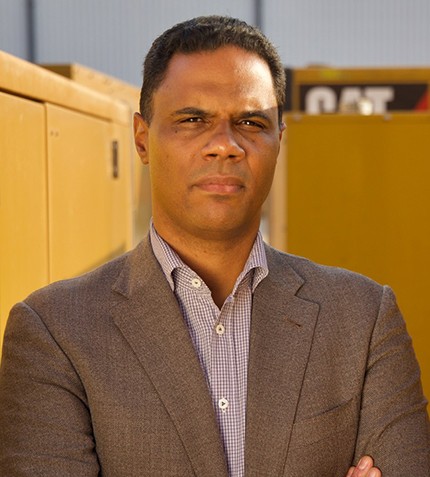
"The DRC market has changed significantly in the last few years, becoming more fragmented and more Chinese-dominated, whereas the typical large-scale miners like Glencore have reduced capacity."
Noël Mabuma
CEO, CONGO EQUIPMENT
What have been the key developments at Congo Equipment in the last 1-2 years?
We used to work with three key customers, but the DRC market has changed significantly in the last few years, becoming more fragmented and more Chinese-dominated, whereas the typical large-scale miners like Glencore have reduced capacity. To adapt to these changes, Congo Equipment has put in place a three-year strategic plan. The first pillar of our new strategy is diversification, and part of this is the set-up of a Chinese team and the growth of our customer base. The second pillar is services growth, within which we seek to expand our geographical footprint beyond Katanga, grow the number of our machines, and develop our secondary business lines like used and rented equipment. Our third pillar envisages sustainable profitability, for which we have already reduced our workforce to 300 employees, concomitantly driving further localization to ensure lower turnovers because many expat contracts only last about two years.
Could you elaborate on how Congo Equipment adapted to serve a growing Chinese clientele, and why do you think many local businesses cannot penetrate this market?
In 2021, 80% of our units were sold to Chinese customers, even though the value of Chinese-sold equipment is less dominant because large miners tend to buy bigger and more expensive machines. The Chinese business culture and behaviors are different. Chinese customers want to work with partners rather than machine dealers, and being able to send technicians who speak their language is greatly appreciated. I believe many of our peers fail to consider these aspects, which does not allow them to gain the confidence of Chinese companies. Congo Equipment established a full Chinese business unit with Chinese representatives in sales, key accounts, and after sales. We also have an employee based in China who liaises directly with the HQ of mining companies operative in the DRC.
Can you tell us more about your progress to develop an e-commerce platform?
Digitalization and the launch of an e-commerce platform remains a core priority at the company and we have made steady developments, including the switch to a CRM system though which we can better monitor our customers’ needs. In 2022, we plan to change our ERP system, based on which we can start offering online services.
What are some of the recent innovations CAT brings to the market?
CAT has continuously developed its technologies. In the past, we were not able to provide quantitative analysis on the machine performance, but today, 50% of our machines are digitally connected and we are striving to increase this number and improve overall customer connectivity. With this in mind, we are providing training both for our employees and for our customers so that they understand how to make the most of existing technologies. Congo Equipment runs four training centers.
What is the rationale behind expanding your equipment rental services?
Before, subcontracts had three-year contracts or more, but today most of our customers operate 3-6 months contracts, which makes it difficult for them to invest in new equipment. In this scenario, rentals become preferable. We have expanded our rental fleet to 70 machines, half of which we plan to renew next year to reduce downtime.
How do you think the current appetite for copper and cobalt is translating into the DRC mining industry?
There are two indicators showing a clear correlation between the boom in commodity prices (and underlying demand for copper and cobalt), and a DRC activity boom. First, industry’s demand for machinery has doubled since 2019, stronger commodity fundamentals showing in on-the-ground machinery demand. Second, the number of projects has increased, and more projects are due to take off, which again shows a buoyant cobalt and copper industry in the country. Glencore, for instance, has reopened the Mutanda mine.
What impact has the subcontracting law of 2018 had so far?
One of the positive developments brought about by the introduction of local subcontracting laws is the rise of more local subcontracting businesses, which we support through financing, training, or putting them in touch with the right partners. Otherwise, the confusion surrounding the definition of a “subcontractor” persists and no further clarifications were added.










